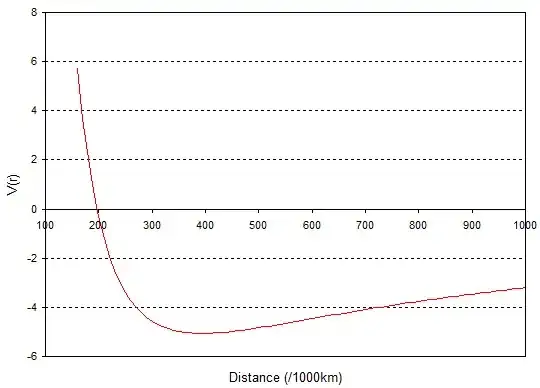This answer includes the following:
The gravitational potential energy is due to the attractive gravitational force, but for an orbiting object there is also a (fictitious) centrifugal force pushing it outwards. If we calculate the potential energy due to the centrifugal force and add it to the gravitational potential energy we get an effective potential energy:
$$ V_{eff}(r) = -\frac{GMm}{r} + \frac{L^2}{2mr^2} \tag{1} $$
where $L$ is the angular momentum, which is a constant for an orbiting object (because angular momentum is conserved in a central field). If we calculate $V_{eff}$ for an object in a Earth-Moon transfer orbit we get a graph like this:
The stable circular orbit is at the minimum of the potential i.e. at about 384,400km, which is reassuring as this is the Earth-Moon distance. So far so good.
and then goes on include a third term for effects of General Relativity given in the Wikipedia article on Schwarzschild geodesics
Question: I've never seen the mention of a fictitious potential before, or at least not realized it. Does this one result in oscillations in $r$ that match the radial behavior of an elliptical orbit? I'm encouraged by the shape; shallower at larger radius suggesting that the object spends more time at distances larger than average.
